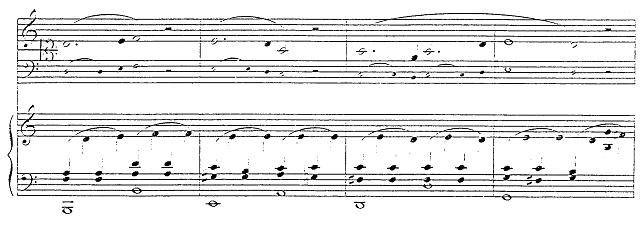
Its form stems from the letter "C" which, in the ancient alphabetical notation system, indicated the note C. It can be inserted into the first, second, third, fourth and fifth line.
The corresponding sound C for all of the five clefs is equal to the one of the fourth piano octave also called central C or C3. In some writings it is possible to find two small dots, such as for the bass clef, to better define the line the clef is situated on.
Here is an example of C-clef with the two small dots above and below the line:

When situated on the first line it is called soprano clef as it can be used to stretch the soprano voice extension. Its position can be even defined through two small dots above and below the first line. Example:

When situated on the second line it is called mezzo-soprano clef since it is used to stretch the mezzo-soprano voice extension. Its position can be even defined through two small dots above and below the second line.
Example:

When situated on the third line it is called contralto clef since it is used to stretch the contralto voice extension. Its position can be even defined through two small dots above and below the third line.
Example:

When situated on the fourth line it is called tenor clef since it is used to stretch the tenor voice extension. Its position can be even defined through two small dots above and below the fourth line.
Example:

When situated on the fifth line it is called baritone clef since it is used to stretch the baritone voice extension. Its position can be even defined through two small dots above and below the fifth line. This latter position of the C-clef in the baritone position is rarely used as it is replaced through the F-clef situated on the third line.
Example:

The C-clef is adopted for vocal music (soprano, mezzo-soprano, contralto, tenor and rarely baritone), whereas in instrumental music it is used in the contralto position for viola and trombone contralto and in the tenor position for the high notes of the cello and the bassoon and the tenor trombone.
Bozzoli has developed a double pentagram system by adding a fictional central line set as a joining element of the upper and lower pentagram. In the central line you can find the C-clef which allows to read the notes on the upper pentagram, in tremble-clef, and in the lower pentagram in the bass clef.


